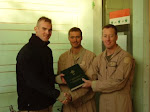By FR. KEVIN M. CUSICK
On a recent pilgrimage to Roma, I was finishing off a morning
cappuccino on the south side of the Bernini colonnade when I saw a
Missionary of Charity emerge through the door of the order’s convent
in the Vatican walls. Blessed John Paul II invited the Missionaries of
Charity some years ago to establish a convent within Vatican City, as
some may recall. I hastily crossed the street, approached her, and,
bowing, made the request that she pray that God would bless me. She,
giggling, responded, “ Oh, Father, I can’t do that!”
I was
surprised that Pope Francis’ precedent on the night of his election as
Supreme Pontiff had not fully permeated the mindset of all the denizens
of his own compact city- state. This vignette reminds us that not even
the teachings and inspirations of the Popes themselves always succeed in
getting wide dissemination.
Papa Francesco is refreshingly accessible, greeting as he did numerous people seated in the “ bacia mano”
seats flanking the dais after a recent Wednesday audience, and
celebrating Mass and preaching daily in the chapel of the Domus Sancta
Marta where he resides. He also shows a playful readiness to accede to
Roman custom, having exchanged his zucchetto on a few occasions with the
faithful who offer him a new one, perhaps acquired at the Ditta
Annibale Gammarelli, popularly believed to be the papal preference for
sartorial details.
More important, Papa Francesco is setting a
standard for simplicity in teaching in order to reach out to the less-
educated among us, who are sometimes forgotten in the educated chatter
of the many theological scholars, about whom our Church is rightly
proud. Theology is capable of lofty heights in reaching for God, but
serves man best by reaching down to where he is so that he might be
brought close to the heavens.
Pope Francis brings his pastoral
gifts to the papacy as did his Predecessors so that a wide variety of
the People of God may be nourished in faith, which must always include
the simplest and humblest among us. The Holy Father’s Tweets are quite
popular on Facebook as well as Twitter for their pithy realism and
spiritual punch, mentioning as they do the reality of the Devil and
taking aim at the misapplication of Vatican II teachings, which has
resulted in “ clericalizing” the laity and a lack of ecclesial
evangelical fervor.
Increasingly, in our experience of the life
of the Church in the wake of Vatican II, it has become more and more
apparent that we have forgotten and neglected in many ways those who
are weak in faith, those for whom our Lord expressed a particular love
when He condemned those who scandalize the “little ones.” We have made
faith more difficult through a snobbish and false intellectualism which
pretends that everyone in the Church either has a Ph.D. or reads
voraciously as if studying for one.
We have spurned the “little
ones” through a presumptive iconoclasm that rejects the ages- old
wisdom that teaches that signs and symbols handed down in the Church
continue to be an effective means of transmission of the faith. These
remarks should not be interpreted as a critique of Benedict XVI, who
demonstrated a marvelous capacity for speaking both to the scholarly
among us as well as to the simple man on the street.
The Church
is for everyone, for the salvation of the whole world, in the same way
that Jesus Christ is the sole Savior who is truly encountered in the
Church, His true Body in the world. This being the case, it is incumbent
upon us to respect all the signs of faith that can help anyone to
come to faith and salvation in Jesus Christ. It is a matter of “ both/
and” in our selection of tools for teaching rather than “ either/ or.”
The Holy Father — whose ministry flows from his role as the Bishop of
Rome together with Christ’s commission to Peter as holder of the keys of
Heaven, and the one who is called to strengthen his brethren — is one
such sign accessible to the many. His presence among us is a living sign
and source of unity for the universal Church, which continues
Christ’s ministry as the sign of the heavenly Father. As Christ is the
perfect sign of the Father so those most closely configured to Him in
His sacramental priesthood share in His role of bringing the world to
the Father through the economy of salvation.
Among priests it is the Pope who is Pontifex Maximus,
the chief bridge- builder, between man and God. The sacraments which
come from the hands of our priests are the means of this “ economy” and
must be mediated to our people through catechesis and praxis. It is true
that Christ is always unfailingly present in the sacraments, above all
in the Eucharist ex opere operato,
but it is also equally true that we are called to understand and to
accept with full submission of intellect and will to that divine
Presence and gift of grace.
Worship is the attitude of full
submission of body, mind, soul, and spirit to God on the part of
intelligent creatures. The highest expression of the dignity of the
human person is present in the man or woman kneeling for prayer or to
receive Jesus Christ truly present in the Eucharist. Man is never
lifted so high as when he kneels low before God.
( Subscribe to
public updates by Fr. Cusick at Reverendo Padre- Kevin Michael Cusick or
follow on Twitter at MCITL. Visit Meeting Christ in the Liturgy at mcitl. blogspot. com for teachings from the Catechism of the Catholic Church
paired with the Scriptures of Holy Mass for every day of the week. Fr.
Cusick blogs at APriestLife. blogspot. com and you can e- mail him at
mcitl. blogspot. com@gmail.com.)













